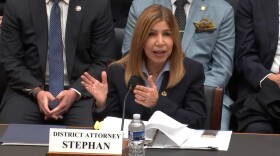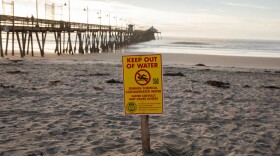It’s the job of the state’s Consumer Protection Safety Division to enforce rules and investigate fires caused by power lines.
In 2007, firestorms raged through San Diego County killing two people, destroying 1,300 homes and forcing the evacuation of half a million people. But the state says SDG&E did not allow it to fully investigate.
CPSD investigators said SDG&E denied them immediate access to witnesses and evidence after the fires. In fact, investigators said SDG&E told them they would not be allowed to interview company workers because the company itself had not completed its own investigation. As a result, CPSD said it was prevented by SDG&E from doing a timely probe.
Ultimately, state investigators found that SDG&E lines caused the '07 fires. And they went further. They concluded that SDG&E violated safety rules by failing to properly design, construct and maintain their power lines and that caused the fires.
“It was their opinion," said SDG&E spokeswoman Stephanie Donovan who was interviewed on KPBS’s Evening Edition recently. “And that was never a finding of fact.”
But that’s because the facts of the case never got a full airing before the California Public Utilities Commission. The commission never held evidentiary hearings on whether SDG&E did indeed violate safety rules as its own investigators had alleged. Instead, PUC representatives entered into closed-door talks with SDG&E. In the end, the company paid a $14 million settlement with regulators.
SDG&E has also settled with hundreds of people who lost their homes in the 2007 fires. Those settlements have exceeded the utility’s $1 billion liability insurance limit. Those uninsured costs could reach another billion to settle remaining lawsuits. That is the chunk of change that the company wants its customers to pay.
But attorney Mitch Wagner said it’s premature for regulators to decide that issue. In fact, he said just because regulators chose not to pursue whether SDG&E was reckless and negligent in causing the '07 fires does not mean that question should not be answered -- and it should be answered in court. Wagner is an attorney who represents hundreds of people who lost homes.
Wagner says he has taken 100 depositions of witnesses, SDG&E employees and others on whether the company was at fault. There are also numerous pieces of evidence, including recordings of dispatch calls made to SDG&E troubleshooters out in the field, all of which are critical in getting to the truth.
“It seems to me that it’s putting the cart before the horse to have the CPUC decide these issues without first having all the evidence developed in the civil litigation and be presented at trial," he said, "so we can see what a jury has to say about whether or not SDG&E is at fault.”
But some said the commission is breaking its own rules by even considering whether to allow SDG&E to pass along the 2007 uninsured wildfire costs to customers.
Diane Conklin is with the citizens watchdog group the Mussey Grade Road Alliance.
“What kind of commission is this? Conklin asked "Are they serving us? Or, are they serving the utilities?
Editor's Note: That question will be explored in Part 2 tomorrow.






